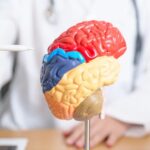
Balancing Carbs and Proteins: A Specialist’s Guide to Healthy Eating
As a nutrition specialist, I understand the importance of balancing carbs and proteins in our diets. Proper nutrition is essential for maintaining energy levels, supporting bodily functions, and achieving overall well-being. In this article, I will provide a clear and straightforward guide to balancing carbs and proteins, helping you make informed choices that support a healthy lifestyle.
Understanding Carbohydrates and Proteins
What Are Carbohydrates?
Carbohydrates are one of the three macronutrients, along with proteins and fats, that provide energy to the body. They are found in bread, rice, pasta, fruits, vegetables, and legumes. Carbohydrates are classified into three main types:
- Sugars: Simple carbohydrates found in fruits, milk, and sweeteners.
- Starches: Complex carbohydrates found in grains, legumes, and starchy vegetables.
- Fiber: Indigestible carbohydrates found in fruits, vegetables, and whole grains that aid in digestion.
What Are Proteins?
Proteins are essential macronutrients for building and repairing tissues, producing enzymes and hormones, and supporting immune function. Proteins are made up of amino acids, which are the body’s building blocks. Protein sources include meat, poultry, fish, eggs, dairy products, legumes, nuts, and seeds.
The Importance of Balancing Carbs and Proteins
Balancing carbs and proteins in your diet is essential for several reasons:
- Energy Levels: Carbohydrates provide a quick energy source, while proteins help sustain energy levels over time. A balanced intake ensures you have the power you need throughout the day.
- Muscle Maintenance: Proteins are crucial for muscle repair and growth. Balancing them with carbs helps maintain muscle mass and supports physical activity.
- Blood Sugar Control: Combining carbs with proteins can help stabilize blood sugar levels, preventing spikes and crashes that can lead to fatigue and cravings.
- Weight Management: A balanced diet can help control appetite and promote a healthy weight. Proteins increase satiety, reducing the likelihood of overeating.
How to Balance Carbs and Proteins in Your Diet
Step 1: Calculate Your Daily Needs
Understanding your carbohydrate and protein needs is the first step to balancing your diet. These needs can vary based on age, gender, activity level, and health goals.
- Carbohydrates: The Dietary Guidelines for Americans recommend that 45-65% of your daily caloric intake come from carbohydrates. A 2,000-calorie diet translates to about 225-325 grams of carbs daily.
- Proteins: The recommended dietary allowance (RDA) for protein is 0.8 grams per kilogram of body weight. For example, a person weighing 70 kilograms (154 pounds) should aim for about 56 grams of protein daily. Athletes and active individuals may require more protein to support muscle recovery and growth.
Step 2: Choose Quality Sources
Selecting high-quality sources of carbs and proteins is essential for a balanced diet.
- Carbohydrates: Focus on whole, unprocessed carbs like fruits, vegetables, whole grains, and legumes. These foods provide essential nutrients, fiber, and sustained energy.
- Proteins: Choose lean protein sources like poultry, fish, eggs, dairy, legumes, nuts, and seeds. These foods are rich in essential amino acids and support overall health.
Step 3: Plan Balanced Meals
Creating balanced meals with carbs and proteins is critical to maintaining energy levels and supporting bodily functions.
- Breakfast: Start your day with a balanced breakfast with carbs and proteins. For example, enjoy a bowl of oatmeal topped with Greek yogurt and fresh berries.
- Lunch: For a satisfying lunch, combine lean proteins with complex carbs. Try a quinoa salad with grilled chicken, mixed greens, and colorful vegetables.
- Dinner: Ensure your dinner includes a mix of carbs and proteins. Consider a plate of salmon, brown rice, and steamed broccoli for a nutrient-dense meal.
- Snacks: Opt for balanced snacks that pair carbs with proteins. Examples include apple slices with almond butter, hummus with carrot sticks, or a handful of nuts with a piece of fruit.
Practical Tips for Balancing Carbs and Proteins
Tip 1: Mind Your Portions
Portion control is essential for balancing carbs and proteins. Use visual cues to help you gauge appropriate portions:
- Carbs: Fill one-quarter of your plate with whole grains or starchy vegetables.
- Proteins: Fill one-quarter of your plate with lean protein sources.
- Vegetables: Fill half your plate with non-starchy vegetables for added fiber and nutrients.
Tip 2: Listen to Your Body
Pay attention to your body’s hunger and fullness cues. Eating can help you avoid overeating and get the right balance of nutrients.
Tip 3: Stay Hydrated
Proper hydration supports overall health and can help regulate appetite. Aim to drink plenty of water throughout the day, and consider herbal teas or infused water for added flavor.
Tip 4: Be Flexible
Balance doesn’t mean perfection. It’s okay to enjoy your favorite foods in moderation. The key is to make mindful choices most of the time and maintain a balanced approach to eating.
Common Myths About Carbs and Proteins
Myth 1: Carbs Are Bad for You
Carbohydrates have gained a bad reputation recently, but they are essential to a healthy diet. The key is choosing whole, unprocessed carbs that provide nutrients and sustained energy.
Myth 2: High-Protein Diets Are Always Better
While protein is essential for muscle maintenance and overall health, excessively high-protein diets can strain the kidneys and may not suit everyone. Balance is critical, and it’s necessary to include a variety of nutrients in your diet.
Myth 3: You Need Protein Supplements to Build Muscle
Most people can meet their protein needs through whole foods without supplements. Incorporate high-quality protein sources into your meals and snacks to support muscle growth and recovery.
Real-Life Examples of Balanced Meals
Example 1: Balanced Breakfast
- Meal: Scrambled eggs with spinach and whole-grain toast.
- Carbs: Whole-grain toast provides complex carbohydrates for sustained energy.
- Proteins: Scrambled eggs offer high-quality protein and essential amino acids.
Example 2: Balanced Lunch
- Meal: Chickpea and quinoa salad with mixed vegetables.
- Carbs: Quinoa and chickpeas provide a mix of complex carbohydrates and fiber.
- Proteins: Chickpeas and quinoa also offer plant-based protein for muscle maintenance.
Example 3: Balanced Dinner
- Meal: Grilled salmon with sweet potato and asparagus.
- Carbs: Sweet potato offers complex carbohydrates and vitamins.
- Proteins: Grilled salmon provides lean protein and omega-3 fatty acids for heart health.
Conclusion
Balancing carbs and proteins is essential for maintaining energy levels, supporting muscle health, and achieving overall well-being. You can create a diet supporting your health goals by understanding your needs, choosing quality sources, and planning balanced meals. Remember to listen to your body, stay hydrated, and be flexible in your approach to eating. With these practical tips and insights, you can enjoy the benefits of a balanced diet and lead a healthier, more vibrant life.
















